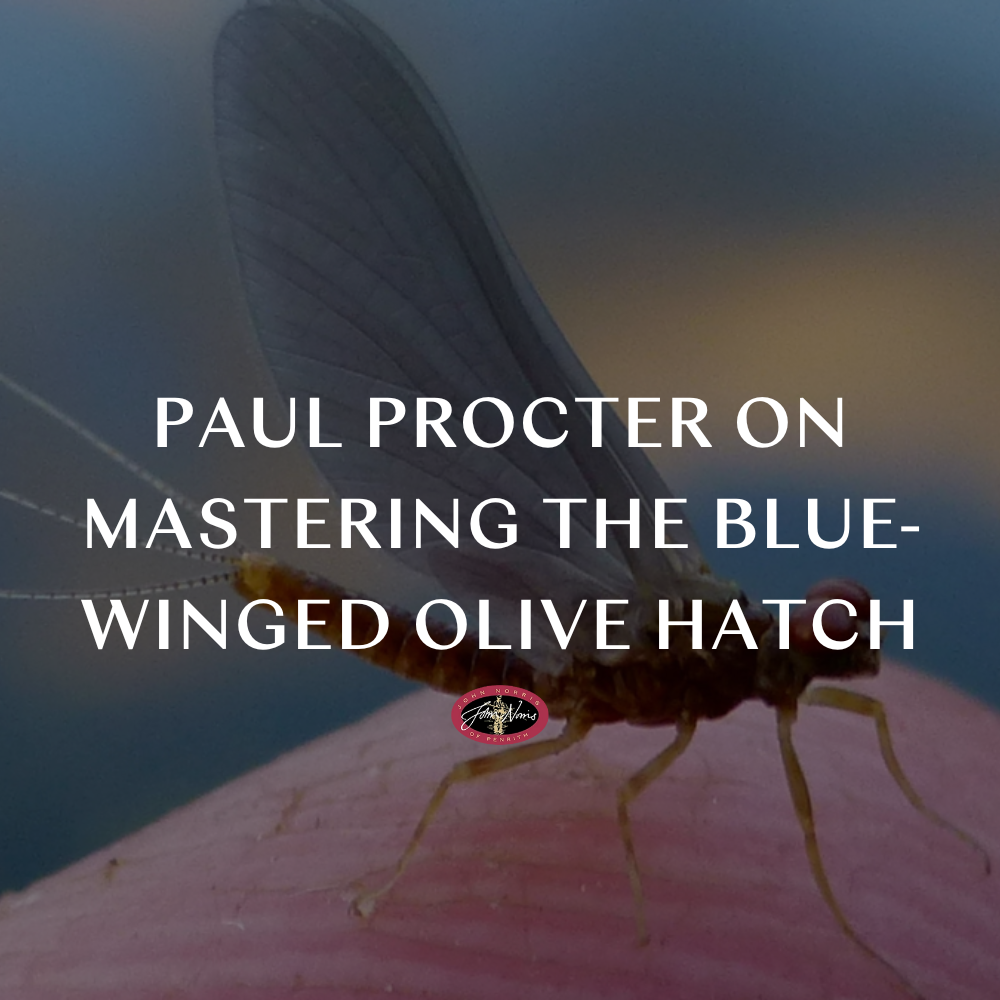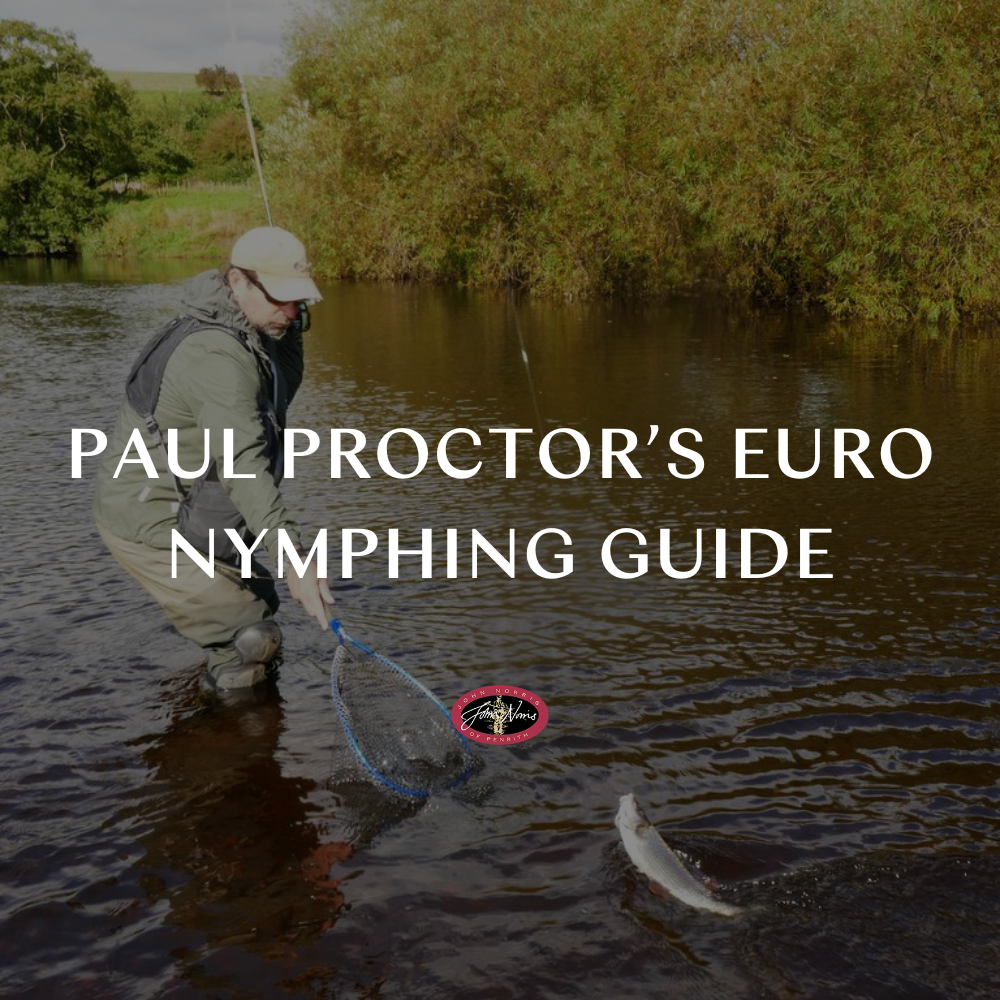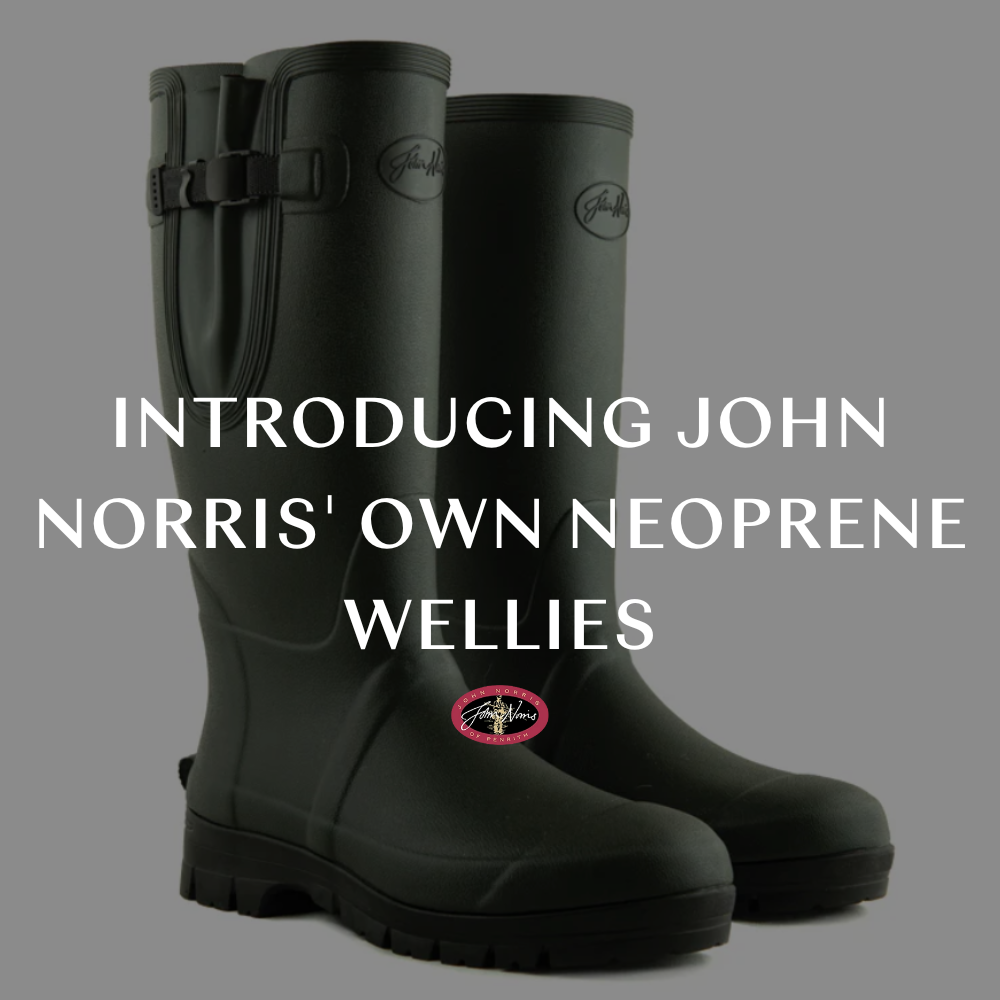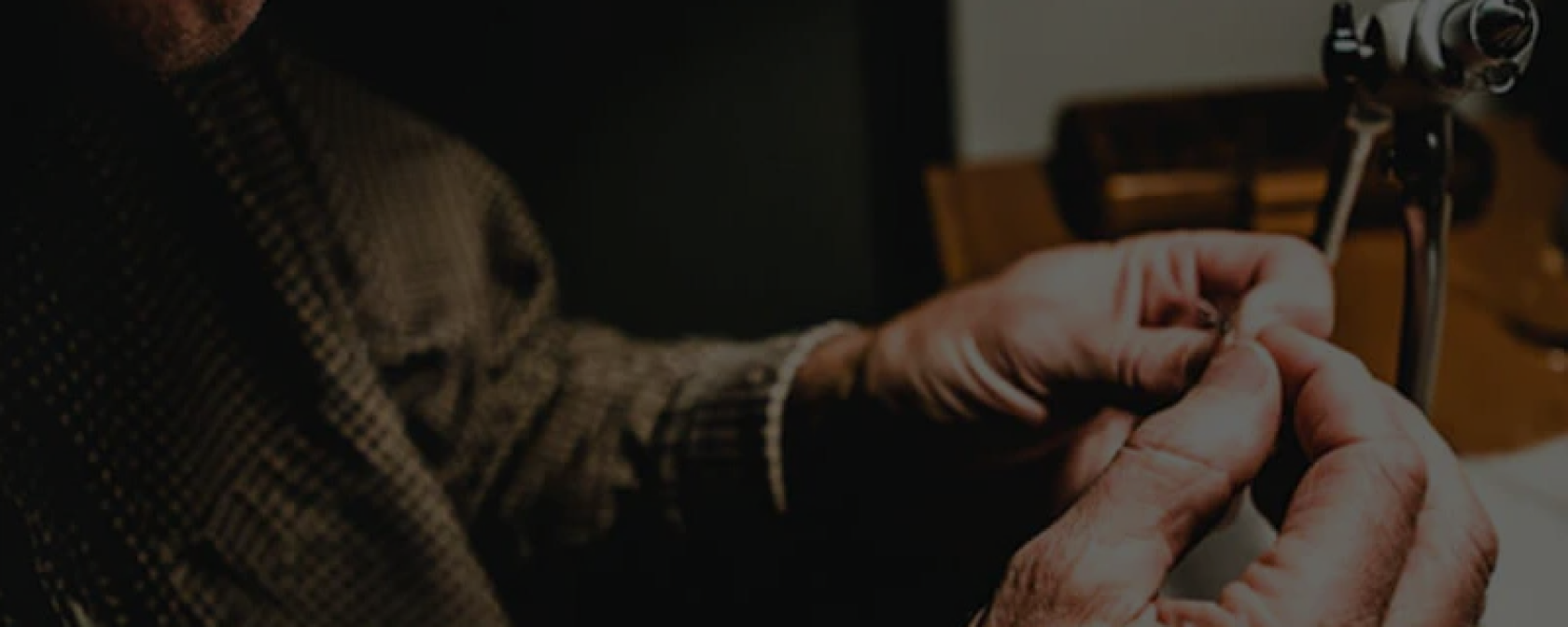Paul Procter on Mastering the Blue-Winged Olive Hatch

As we slide into August, hot, settled weather may well curtail daytime hatches, but all is not lost. Come the warmth of evening, one of our most dependable upwinged flies steps into the spotlight. While Mayflies and March Browns command a mythical reverence among anglers and trout alike, resident guide Paul Procter argues that another insect offers a better return on investment. Step forward: the Blue-Winged Olive (B-WO).
This modest little olive may lack the size and grandeur of its more illustrious cousins, but when hatching en masse, its presence more than compensates for its lack of stature. What’s more, its lifecycle offers a second opportunity, with returning spinners laying eggs in open water; two bites of the cherry in one evening.
The B-WO Lifecycle
B-WO nymphs spend the winter months tucked away in mossy crevices. By late May, they mature and prepare to emerge. Like many (but not all) upwings, they rise through open water to the surface, splitting their nymphal shucks to become winged adults, or ‘duns’.
Once airborne, duns flutter towards riverside cover, hiding beneath broad leaves. Within 24 hours, they transform again into their final form: spinners. Come evening, these spinners gather in mating swarms before the females return to lay eggs on the water. The eggs either sink or adhere to submerged vegetation, beginning the cycle anew.
How to Identify a B-WO
As the name suggests, the smoky-blue forewings of the B-WO dun are its most distinctive feature. Another key trait is the presence of three lightly banded tail filaments. Tail fibres can break or go missing, but the banding provides a reliable ID.
In the spinner stage, a vivid mahogany-orange abdomen sets them apart, though some may retain an olive hue. More reliably, the spinners sport clear, finely veined wings and significantly longer tails, although females often shed these before egg-laying to better dip their abdomens beneath the surface. It’s one reason I rarely bother tying tails onto my spinner imitations.
Where to Find Them
Whether on the fast-flowing torrents of a spate river or the languid bends of a chalkstream, B-WOs are both common and widespread. In Cumbria, we’re lucky, most rivers support good B-WO activity, particularly the Eden and Eamont. Even some seemingly inhospitable headwaters can produce dense hatches.
On calmer evenings, duns may emerge in droves, often at odds with the austere appearance of the water. Alkaline streams tend to offer richer feeding grounds and bumper hatches.
When to Expect Hatches
B-WOs are primarily a summer fly, with peak hatches from June through August, particularly on warm evenings. That said, I’ve witnessed them as early as 26th May and even late into November. One memorable December, I even saw grayling rising to BWOs during a warm spell on a chalkstream.
In summer, your best chance is evening through dusk: the ideal post-work window. As autumn encroaches, B-WOs tend to appear from late morning and may persist into the afternoon or even early evening on mild days.
What Size Imitation Should You Use?
We anglers often obsess about matching the size of natural flies. Here in Cumbria, I find size 16 imitations work best for both duns and spinners. Cross over into Yorkshire, however, and a size 18 often proves more accurate.
That said, during heavy hatches, it can pay to fish a slightly larger fly, say, a size 14, to help your offering stand out. I recommend carrying flies in sizes 14 through 18 to cover all bases.
Early Hatch Strategy
At the start of a hatch, when only a few duns are emerging, trout will often travel a surprising distance to intercept a meal. They can be difficult to pin down as they criss-cross currents. The key is to anticipate their path and place your fly ahead of them.
Early feeders are typically less fussy. A size 16 Olive Klinkhamer or Shuttlecock Emerger often does the job nicely.
Pole Position, Main Hatch
As the hatch intensifies, trout settle into prime feeding stations near the surface. Now they're conserving energy and taking only flies that drift directly overhead.
This is where precision trumps pattern. Even a perfect fly may go ignored if it misses by an inch. I once made 108 casts to a single trout before landing it which is proof that as long as a fish continues rising, it’s still catchable.
For the main hatch, go with a size 16 Olive Paradun, Grey Duster, or the ever-reliable F Fly.
The After Party: Spinner Fall
As the hatch wanes, mating swarms gather overhead. In the deepening dusk, it’s the egg-laden females returning to the water that trout key in on. During summer, this spinner fall can extend well into the early hours.
Duns and spinners may overlap now. I’ve had great success fishing a size 16 Grey Duster through this period, regardless of which stage was dominant. In low light, colour matters less than silhouette. Trout see contrast best at the surface so use darker flies for visibility. Beneath the surface, colour becomes more important due to light reflection. Choose dry flies with bright wing posts: fluorescent yellow and white are easy to track, while black works well against silvery, west-facing water. Top patterns include the B-WO Paraspinner and Hi-Vis Spinner.
Swinging Spiders: The Late Show
Once darkness makes dry fly fishing impractical, switch tactics. "Phantom strikes" from unseen rises are frustrating. Instead, fish a spider pattern on a tensioned line and feel for takes.
Use a single spider on a 9ft leader, degreased with Fuller’s Earth to reduce surface disturbance. Tangles in the dark are a nightmare, so keep it simple.
Fine-wire Stewart-style spiders are perfect. Try mahogany or orange for spinner imitations, olive for drowned duns. You can’t go wrong with a Partridge & Orange.
Think Big
Some claim large trout don’t rise to small flies, but a heavy B-WO hatch can tempt even the most elusive specimens. Low light adds to their confidence. Normally solitary, big fish will feed alongside smaller ones during these hatches.
That’s why I seldom fish anything lighter than 4.5lb (approx. 0.145mm) tippet during B-WO time. Copolymer monofilament is my preference: it's fine for its strength and supple enough to allow natural drift. I rely on Guideline 5X Power Strike.
Go Prepared
Lastly, do yourself a favour…always go prepared. A hat-mounted head torch is indispensable when it comes to changing flies. Just be careful not to swing the beam across the water, as this simply alerts fish of your presence. Some will find a wading staff handy too when navigating a pool in complete darkness. The collapsible types are best as they simple fold away when not required.
Granted, we all have our favourite outfit, but I also carry a second rod, fully rigged and ready. Call it ‘insurance’ against any tangles that might occur during peak action- trust me, you’ll thank yourself. It’s far quicker (and far less stressful) to put down a tangled rod and pick up the spare, rather than wasting precious time unravelling a dreaded bird’s nest. These days, you can easily pick up a ready-to-go kit like the Guideline Embrace Outfit, which won’t break the bank and makes an ideal backup setup.

There’s something truly special about watching trout rise through golden evening light to sip delicate Blue-Winged Olives. From the early trickle of duns to the crescendo of spinner falls and beyond into spider territory, this modest fly punches well above its weight. So pack your torch, prep your spare rod, and make the most of August’s warm evenings. You might just meet your fish of the season.
This feature is part of our ongoing seasonal guest blog series, so don’t forget to explore the rest for more timely advice to keep your fishing sharp year-round. And if you’re looking to update your gear, pay a visit to John Norris, either in-store or online. With expert support, a carefully curated range of premium fly fishing tackle, and everything you need to make the most of your time on the water, John Norris has you covered for the season ahead and beyond.

















